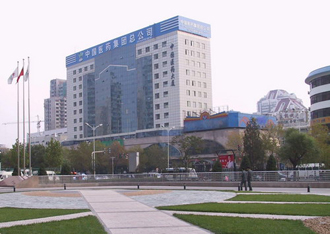China Pharmaceuticals Set to Overtake Japan's
By wchung | 28 Dec, 2025
Drug Surge: China's drug industry surges from 9th place to 2nd in less than a decade.
China is set to overtake Japan in the total size of its pharmaceutical industry, according to Bian Zhenjia, deputy commissioner of China’s State Food and Drug Administration.
One reason is that China has become a leading research and development base for about 25% of the world’s biggest pharmaceutical firms. Not only does China offer extensive and modern laboratories, it can provide a large number of trained technical staff and abundant patient populations from which to draw subjects for cost-efficient clinical trials.
China’s entry into the WTO prompted many leading pharmaceutical companies to relocate their main R&D centers to China. Among them are Switzerland’s Roche which opened an R&D center in Shanghai and GSK which opened its OTC R&D center in Tianjin. AstraZeneca, Bayer, Eli Lilly and Hoffman-La Roche have also set up R&D or clinical trial centers in China. Pfizer and Johnson & Johnson will also be joining them.
Total production value of China’s pharmaceutical industry surged 29.6% to 802.4 billion yuan ($126 billion) for the first seven months of 2011. Japan’s pharmaceutical market was worth $95 bil. in 2009 and was not projected to grow by more than about 1% per year through 2014. The U.S. is far and away the leading pharmaceutical market, with total revenues of $320- $330 billion forecast for 2011, up modestly from $310 billion in 2010.
The value of the global pharmaceutical market is projected to grow only 5-7% to $880 billion this year.
China’s pharmaceutical industry has been moving up the ranks fast, rising from 9th place in 2003. However, unlike advanced markets like the U.S., Japan and Germany, China’s pharma industry remains highly fragmented, with about 3,500 firms involved in production. As of 2008 China had only one firm among the world’s 50 leading pharmaceutical firms, Sinopharm ranked 26th with $4.7 bil. in total revenues. By contrast the U.S. had 21 firms among the top 50 and Japan had 10.
Due in large part to its accession to the WTO, China’s pharmaceutical imports and exports have surged recently, growing to $40.9 billion during the first seven months of 2011, a 40.1% jump over last year.
The pharmaceuticals were one of the key industries included in the government’s 11th national development plan which ended in 2010. Thanks in part to a project launched in 2008 to speed up the development of new medicines, the industry has surpassed government targets. Up to 39 new pharmaceutical products were granted licenses for new products or were reviewed. Another 23 new drugs have completed clinical tests while almost 800 are currently in various phases of R&D.
The government plans to invest 40 billion yuan ($6.3 billion) over the next five years to help produce more pharmaceutical breakthroughs, said Sang Guowei, a member of the Chinese Academy of Engineering and vice chairman of the Standing Committee of the National People’s Congress. By comparison, the global pharmaceutical industry invested a record $65.3 billion into R&D in 2009.
Another trend expected to give a shot in the arm to China’s pharmaceutical industry growth is the rapid aging of the nation’s population, combined with its rapid urbanization, which also increases demand for modern medicines.

Sinopharm, China's biggest pharmaceutical company, ranks only 26th among the world's biggest in the industry.
Asian American Success Stories
- The 130 Most Inspiring Asian Americans of All Time
- 12 Most Brilliant Asian Americans
- Greatest Asian American War Heroes
- Asian American Digital Pioneers
- New Asian American Imagemakers
- Asian American Innovators
- The 20 Most Inspiring Asian Sports Stars
- 5 Most Daring Asian Americans
- Surprising Superstars
- TV’s Hottest Asians
- 100 Greatest Asian American Entrepreneurs
- Asian American Wonder Women
- Greatest Asian American Rags-to-Riches Stories
- Notable Asian American Professionals

